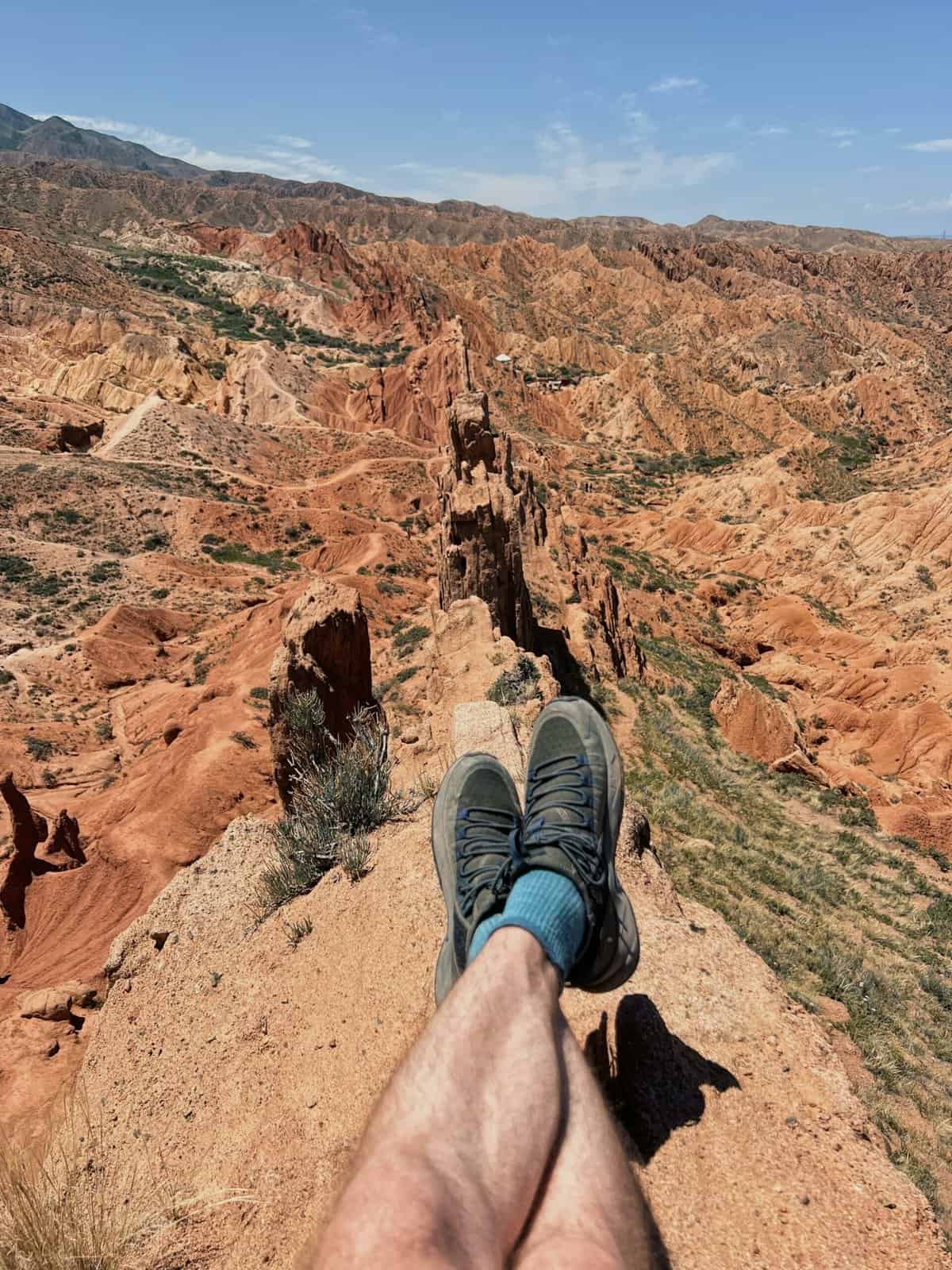
So, you’re ready to hit the trails, the backcountry, or maybe just your favorite rugged weekend getaway? Whether you’re a seasoned tramper or just starting to explore the great outdoors, the right pair of boots can make or break your adventure. Your boots are more than just footwear—they’re your most crucial piece of gear, the one thing standing between you and a blistered, miserable trek. But with so many options, where do you even begin?
Let’s lace up and dive deep into what you need to look for in a tramping boot, breaking down each area so you can make an informed choice that’ll keep you comfortably on the move.
1. Fit: The Goldilocks Principle
Let’s be real—if the boot doesn’t fit, your adventure is going to be a slog. Fit isn’t just about size; it’s about shape, width, and how the boot hugs your foot. Here’s what to watch out for:
- Toe Room: Your toes need some wiggle space, especially when descending. A thumb’s width of space between your longest toe and the end of the boot is ideal.
- Heel Lock: Your heel should sit snugly with minimal lift when you walk. Too much movement can lead to blisters—trust us, that’s a pain you want to avoid.
- Arch Support: Different feet, different needs. Make sure the boot’s arch support matches your foot’s natural arch to prevent fatigue.
- Width: Boots come in various widths. If you’ve got wide or narrow feet, make sure to try on several options. A boot that’s too narrow can cause pressure points, while a too-wide boot might lead to instability.
Pro Tip: Try on boots with the socks you plan to wear tramping, and do it in the afternoon when your feet are naturally a bit swollen. This will give you a more accurate fit.
 Salewa ALP TRAINER 2 MID GTX (more info-click)
Salewa ALP TRAINER 2 MID GTX (more info-click)
2. Material: Balancing Durability and Comfort
Boots come in various materials, each with its own set of pros and cons. The material determines not just durability but also how breathable and waterproof your boots will be.
- Leather: Full-grain leather is the go-to for durability and water resistance but requires a break-in period. Nubuck leather offers similar benefits with a bit more flexibility and breathability.
- Synthetic: Lighter and quicker to break in, synthetics like nylon and polyester are great for shorter hikes but may not last as long as leather.
- Waterproofing: Many boots come with a waterproof membrane, like Gore-Tex. This keeps your feet dry in wet conditions but can reduce breathability, which might cause sweating. If you’re tramping in warmer climates, consider a non-waterproof boot for better ventilation.
Pro Tip: Leather boots require regular maintenance, so be prepared to clean and treat them to extend their lifespan. If you’re a weekend warrior, synthetics might offer the best balance of convenience and performance.

3. Sole and Traction: Grip It and Rip It
The sole of your boot is where the rubber meets the trail—literally. A good sole will keep you stable on various terrains, from muddy paths to rocky scrambles.
- Outsole: Look for deep lugs and a durable rubber compound. Vibram soles are a popular choice, known for their traction and durability. The deeper the lugs, the better the grip in muddy or loose terrain.
- Midsole: This is the cushioning layer, and it determines the boot’s stiffness. EVA foam is lighter and more cushioned, while PU (polyurethane) offers more durability and support, ideal for carrying heavy loads.
- Shank: A shank is a piece of plastic or metal embedded between the midsole and outsole to provide rigidity. A boot with a full shank offers more support for rough terrain, while a partial shank is more flexible for easier trails.
Pro Tip: If you plan on carrying a heavy pack, opt for a stiffer sole. It’ll give you the support you need without compromising on comfort.

4. Weight: The Lighter, the Better—But Not Always
Boot weight can affect your endurance and speed. Lighter boots are great for fast, agile tramping but may sacrifice some durability and support.
- Lightweight Boots: Ideal for day hikes or well-maintained trails. They’re comfortable and less fatiguing but may lack the support needed for rougher terrain or multi-day trips.
- Mid-Weight Boots: A good balance of support, durability, and comfort. These are versatile enough for most tramping conditions and often provide better protection against the elements.
- Heavyweight Boots: Built for extreme conditions and heavy loads. These are your go-to for alpine adventures or long, arduous treks, but they require more energy to hike in.
Pro Tip: Consider the type of tramping you’ll be doing most often. If you’re hitting rugged trails or carrying a heavy pack, the extra weight in your boots might be worth it for the added support.
5. Ankle Support: To High-Cut or Not to High-Cut?
Ankle support is critical, especially if you’re navigating uneven terrain or carrying a heavy pack.
- Low-Cut Boots: These resemble trail shoes and are great for fast and light tramping on well-maintained trails. They offer less protection but are lighter and more breathable.
- Mid-Cut Boots: These provide a balance of support and flexibility. They’re good for more challenging terrains and offer some ankle protection without being too restrictive.
- High-Cut Boots: The best choice for rough, uneven terrain or heavy loads. They offer maximum ankle support but at the cost of weight and flexibility.
Pro Tip: If you have a history of ankle injuries or will be tramping in rocky, uneven areas, opt for mid or high-cut boots. Your ankles will thank you.
6. Waterproofing vs. Breathability: Finding the Sweet Spot
Do you need waterproof boots? It depends on where and when you’re tramping. Waterproof boots are great for wet conditions but can lead to sweaty feet if the weather’s warm.
- Waterproof Boots: Best for wet, muddy conditions or snow. The downside? They can trap heat and moisture, making your feet sweat more.
- Non-Waterproof Boots: These breathe better, making them ideal for hot, dry climates. You can always pair them with waterproof socks if you hit a wet patch.
Pro Tip: If you tramp in varying conditions, consider having two pairs of boots—one waterproof, one not. That way, you’re prepared for whatever the trail throws your way.
7. Breaking Them In: Don’t Skip This Step
Even the best boots need a break-in period. Don’t head straight to the backcountry with brand-new boots unless you enjoy blisters and misery.
- Start Small: Wear your boots around the house, then on short walks or easy hikes. Gradually increase the distance and difficulty.
- Check for Hot Spots: If you feel any areas rubbing or causing discomfort, address them before they turn into blisters. You can use moleskin or tape as a temporary fix.
Pro Tip: Plan to break in your boots over several weeks, not days. Your feet and your patience will both benefit.
Choosing the right tramping boot is a blend of science, art, and personal preference. No single boot is perfect for everyone, but by paying attention to fit, materials, sole construction, weight, and ankle support, you’ll find a pair that makes your adventures more comfortable and enjoyable.
So, before you hit that next trail, take the time to find the boots that fit like a glove, grip like a beast, and feel like you could wear them all day—because on some tramps, you just might.
Happy tramping!









